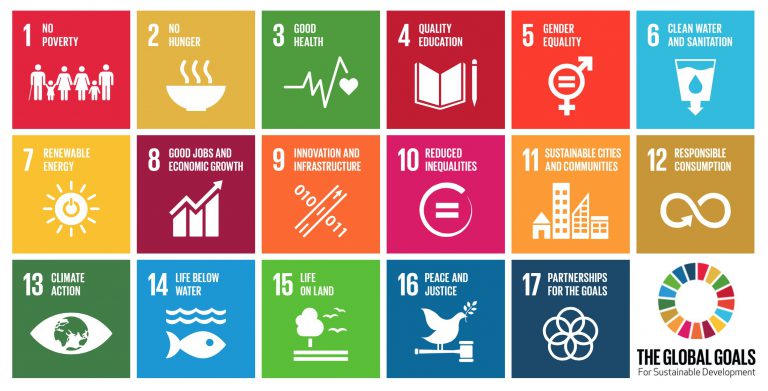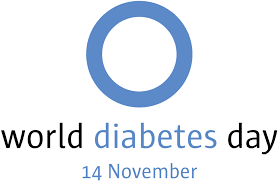United Nation’s Sustainable Development Goals and RetinaRisk
No country is safe from the challenge of diabetes which disables people during their working age, limiting earning potential, reducing life expectancy and impoverishing families. In turn this diminishes countries’ productivity and hinders economic growth. Providing diabetes care drains healthcare spending and can disrupt entire health systems. For this reason, control of diabetes is a priority for non-communicable diseases as part of the United Nation’s Sustainable Development Goal 3 – to ensure healthy lives and well-being for all.
In September 2015, the UN General Assembly adopted the Sustainable Development Goals (SDGs ) – or Global Goals – to stimulate action over the next 15 years in areas of critical importance for humanity and the planet. These 17 goals and their 169 targets don’t just aim to complete the work of the Millennium Development Goals but envision transformational change in all countries and globally to end poverty, protect the planet and ensure prosperity.
They integrate all three dimensions of sustainable development – the economic, social and environmental – and are built on the important commitment to leave no one behind.
The universality of the SDGs – meaning that they are equally relevant for developing as for developed countries – makes them an important framework for all policy areas and their resourcing from domestic budgets, foreign investments and international co-operation.

Goal 3: Ensure healthy lives and promote well-being for all at all ages
Target 3.8 Achieve universal health coverage, including financial risk protection, access to quality essential health-care services and access to safe, effective, quality and affordable essential medicines and vaccines for all
The Global Goal on Health aims to ‘Ensure healthy lives and promote well-being for all at all ages’. It targets to achieve Universal Health Coverage, where everyone gets the health services needed and where accessing these needed health services does not cause undue financial hardship. This provides good opportunities for linkages with the WHO Global Action Plan on Universal Eye Health (GAP), as the GAP calls for access to comprehensive and equitable eye care services for all, with emphasis on vulnerable groups.
The GAP calls on countries to develop and maintain a sustainable workforce for the provision of comprehensive eye health services, fully in line with the SDG target to substantially increase the recruitment, development, training and retention of the health workforce in developing countries.
Universal Eye Health Critical to Achieving SDG-3: Good Health and Well-Being of People
Globally, 80 percent of blindness and vision loss is preventable or treatable if detected early enough. Many eye conditions are classified as chronic, or non-communicable diseases (NCD), including cataract, macular degeneration, glaucoma and diabetic retinopathy. While refractive error is not traditionally classified a disease, Vision 2020 Australia considers it a chronic condition. NCDs disproportionately affect low and middle income countries where nearly three quarters of all NCD deaths (approximately 28 million) occur.37 Poverty is closely linked with NCDs. The rapid rise in NCDs is predicted to impede poverty reduction initiatives in developing countries, particularly due to the associated household costs associated with health care.
As the first point of contact between the community and the health system, primary care plays an important role in preventing, detecting and managing non-communicable eye disease. Patients with an existing non-communicable disease often have multiple co-morbidities including those which affect the eyes and vision. Many non-communicable conditions also exhibit early signs and symptoms that can only be detected upon comprehensive ocular investigation. Primary eye care readily facilitates the early detection of non-communicable disease that may otherwise go undetected until the later stages of disease progression and primary eye care professionals such as optometrists are therefore essential and willing participants in the multi-disciplinary approach to non-communicable disease prevention and management.
Despite significant rates of refractive error, cataract and diabetic retinopathy, eye health and vision care services in many developing countries remain under-resourced. Workforce capacity building is critical to the delivery of effective eye care. In Asia and the Pacific there is a vast shortage of personnel trained in eye health and vision care, which is having tremendous implications for the health and wellbeing of millions of people in the region.
Where countries do have adequate human resources there may be an uneven distribution of personnel including doctors, nurses and primary health workers. In these cases, most of the workforce is concentrated in a few facilities or confined to urban areas. Coordination and planning at local, provincial and national levels is essential to ensure existing resources in eye health and vision care service delivery are operating as efficiently and effectively as possible.
According to World Report of Vision 2018, WHO has come up with the comprehensive eye care approach to ensure eye care for all to achieve universal health coverage. According to WHO, comprehensive eye care service talks about delivery of effective, safe, high quality, interventions (promotive, preventive, diagnostic, curative treatment and rehabilitative care) for those who need most with continuity of care across all levels (primary, secondary and tertiary), settings (hospital, facilities, community, school), and provisions (type of service and affordability). Since there is a perception that eye care is costly, and poor cannot access and afford services, many Philanthropists, NGOs and private sector came forward and has been providing outreach and school-based eye care services and successfully raising the community level awareness on eye health









